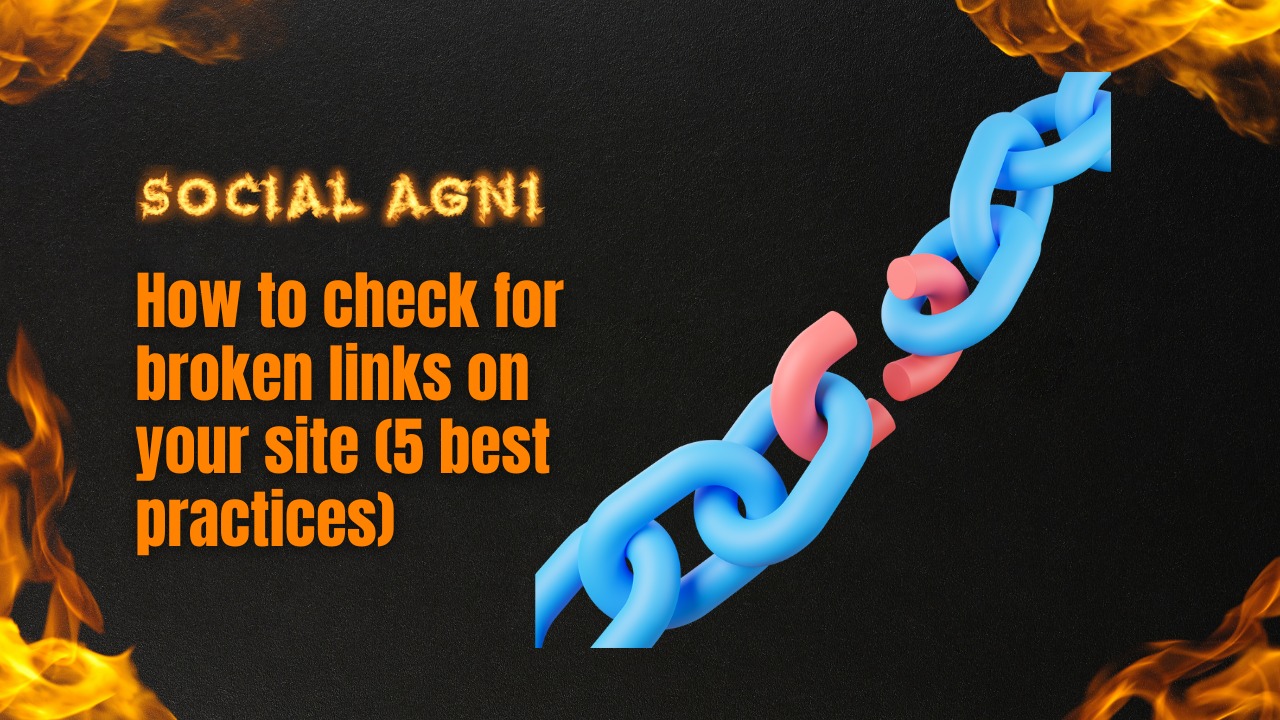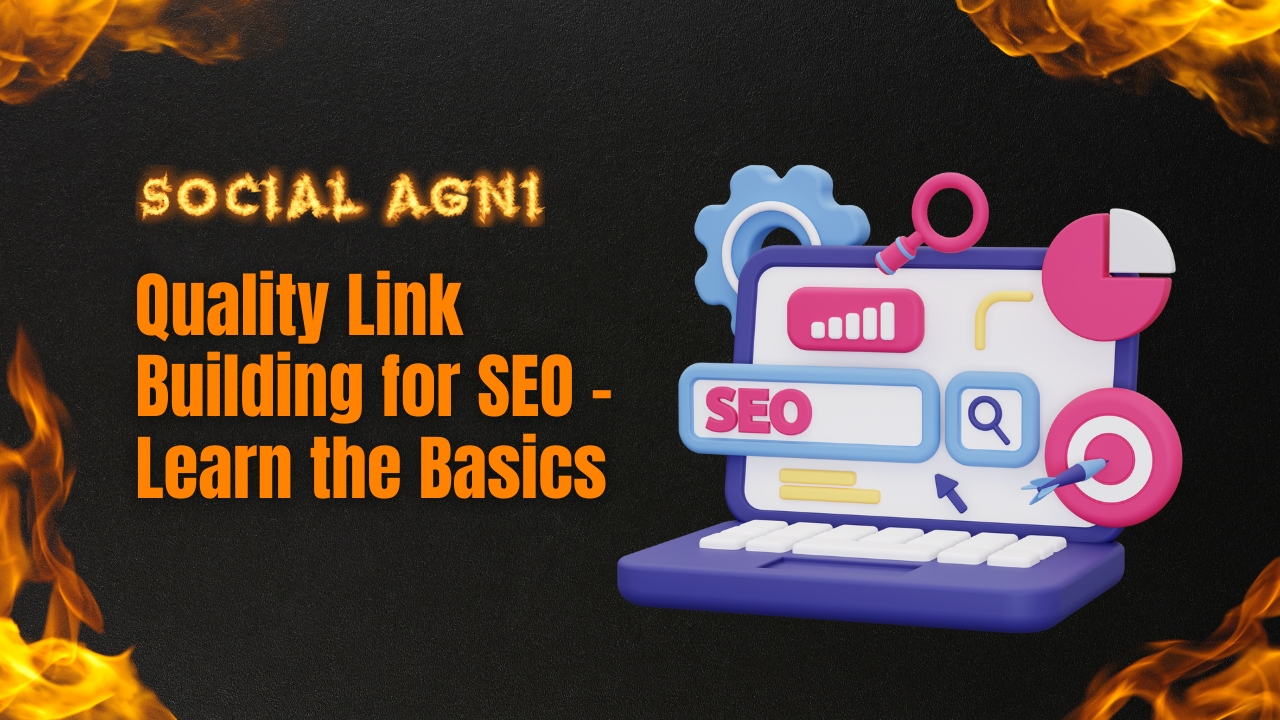Having a website has become increasingly important for businesses and individuals in today’s increasingly digital environment. In addition to providing information and facilitating contact, a website may also be used to promote and sell goods and services or to get exposure to personal initiatives. However, a website alone is not enough to guarantee success in the digital sphere. Maintaining an up-to-date, relevant, and user-friendly website is crucial. Search engines also punish sites with lots of broken links since they think it means the content isn’t very good. Implementing best practices for checking and fixing broken links is crucial if you want your website to be free of them. Improving your website’s performance, user experience, and trustworthiness may be achieved by routine monitoring for broken links and rapid repair. Using tools, doing manual tests, regularly monitoring, correcting broken links, and more are all covered in this article as well as the five recommended practices for checking for broken links on your site. In summary, developing a website is only half the battle in terms of ongoing upkeep. If you care about your website’s search engine rankings, user experience, or credibility, you should check for broken links regularly. Use Tools to Check for Broken Links: One of the simplest methods to check your website for broken links is by using internet tools. Once these crawling tools have found any broken links on your website, you can quickly fix them. Here are some tools for link checking you might want to use: Google Search Console With the use of Google’s free service, Google Search Console, you may monitor the visibility of your website in Google search results. There’s also a report called “Crawl Errors” that will show you where your site has broken links. You must include Google Site Ownership Verification satisfied before you can utilize these benefits. Screaming Frog If your website has broken links, cutting pages, or any other problems, Screaming Frog can discover them for you. The free edition has a limit of 500 URLs, while the subscription version gets access to more advanced capabilities. W3C Link Checker Check your website for broken links with the help of the W3C Link Checker, a free online tool that gives you a comprehensive report of any problems it finds. It works with several markup languages and style sheets, including HTML, XHTML, CSS, and RSS. Dead Link Checker Checks your site for dead links and gives you a comprehensive report of the problems it finds. The free version examines up to 2,000 pages, while the premium version includes more options. Ahrefs This paid tool, Ahrefs, checks for broken links, do SEO analysis, and performs keyword research and backlink analysis. It will crawl your site and report any broken links so you can update them immediately. You may save spending time manually searching for broken links on your website by making use of these tools. They provide you with a full report of all the broken links and other problems on your website so you can solve them right away. Even if you use a tool to check for broken links, human inspection is still necessary to ensure that no links have been missed. Conduct a Manual check of broken links: A human check for broken links on your website is just as important as employing automated systems. Online technologies may miss broken links inside photos and videos, but the human eye may see these errors. Here’s how to scan your site for broken links manually: Make a complete index of your website’s pages, either manually or with the help of a site map generator. Follow every link you find, be it a text link, an image link, or a video link. Note any links that fail to load properly or that lead to a 404 error. The user experience of your site will suffer if any of the photographs on it are damaged or missing. Note any photos that are distorted or missing entirely. Video issues can also negatively impact the user experience of your site, so make sure all of the videos are working properly. Note any video that doesn’t load properly. When you find broken links on your site, you should fix them as soon as possible using the strategy you just created. Fixing links may include updating them, diverting traffic, or deleting them entirely. Manually checking your website for broken links is a tedious but necessary task for maintaining a functional and user-friendly site. It gives you a full picture of your site’s health and can find broken links that other web tools overlook. You may boost your website’s search engine rankings, user experience, and reputation by doing manual inspections regularly and repairing broken links as soon as possible. Regularly Monitor Your Site for Broken Links: You should keep an eye out for additional broken links once you’ve corrected the ones you’ve already found. This may keep your site fresh and functional, avoiding the potential for new broken links to hurt your site’s search engine rankings and user experience. The best practices for checking your site for dead links are as follows. You may set up automated monitoring using several web tools, such as Google Search Console and Ahrefs. This way, you may be alerted as soon as a new broken link is discovered, making it much easier to address the issue quickly. Check your website regularly — at least once a month and preferably more frequently than that. Since the last check, there may have been new broken links or problems, and this can help find them. If you regularly add new information or update existing content, you can reduce the likelihood of broken links appearing on your site. This occurs frequently because when pages are removed or altered, the related links are not always updated. To avoid negative effects on user experience and search engine results, broken links should be fixed as soon as possible after discovery. There won’t be any broken pictures or films to worry
As the world becomes more digitally focused, it’s increasingly vital to ensure that your website has the best possible search engine optimization (SEO). One of the most effective ways to achieve this is through quality link building. By building a network of high-quality links to your website, you can significantly improve your SEO and outrank your competitors on Google. In this article, we’ll explain everything you need to know about quality link building for SEO. We’ll cover the basics, including what link building is, why it’s important, and how to get started. We’ll also provide some advanced tips and tricks to help you take your link building strategy to the next level. What is Link Building? Acquiring links from other websites to your own is an essential element of search engine optimization (SEO) known as link building. In simple terms, links act as votes of confidence for your website, indicating to search engines that your site is valuable and authoritative. However, not all links are created equal, and quality link building requires a strategic and thoughtful approach. To begin with, it is crucial to comprehend that all links do not hold the same value. Some links may be deemed more valuable than others by search engines, based on factors such as the relevance, authority, and trustworthiness of the linking site. Therefore, the goal of quality link building is to acquire links from high-quality sources that are relevant to your website’s content and audience. To do this, you may need to invest in creating high-quality content that other websites will want to link to and share. This could involve writing informative blog posts, creating engaging videos or infographics, or conducting original research that is of interest to your target audience. By creating valuable content that attracts links naturally, you can build a strong foundation for your link building strategy. Another important aspect of quality link building is building relationships with other website owners and influencers in your niche. This involves reaching out to other websites and engaging with them on social media, attending industry events and conferences, and building a network of contacts who can help promote your content and link to your site. Finally, it’s important to be strategic about where and how you place your links. While it may be tempting to place as many links as possible on other websites and directories, this approach can actually harm your SEO efforts by appearing spammy or manipulative. Instead, focus on building high-quality links from authoritative sources that are relevant to your website’s content, and use a variety of anchor text and link types to create a natural and varied link profile. Why is Link Building Important? Link building is a critical aspect of search engine optimization (SEO) that plays a significant role in improving a website’s visibility and ranking in search engine results pages (SERPs). In essence, link building refers to the process of acquiring backlinks to a website from other websites, and it’s considered one of the most important factors that search engines use to determine a site’s authority, relevance, and overall quality. When other reputable websites link to your website, they essentially vouch for the credibility and relevance of your content, signaling to search engines that your site is trustworthy and valuable. Consequently, search engines are more likely to rank your site higher in their search results, which can lead to more traffic, more leads, and ultimately, more revenue for your business. Moreover, link building can also help you establish relationships with other website owners and influencers in your industry, which can be a valuable asset for your business. By networking with other players in your field, you can learn from their experiences, gain exposure to new audiences, and potentially even collaborate on future projects that can benefit both parties. Another important reason why link building is important is that it can help you improve the user experience (UX) of your website. When you create high-quality content that is valuable, informative, and engaging, you’re more likely to attract backlinks from other websites that appreciate the quality of your work. These backlinks can then help drive traffic to your site, as users are more likely to click on links that lead to valuable and relevant content. Ultimately, this can help you build a loyal audience of engaged users who appreciate your content and are more likely to convert into customers or brand advocates. Finally, link building is important because it can help you stay ahead of your competition. In today’s digital landscape, it’s not enough to have a great website or produce great content – you also need to ensure that your content is visible and easily discoverable by your target audience. By building high-quality links that point to your website, you can improve your chances of ranking higher in search engine results and capturing more traffic and leads than your competitors. Additionally, by keeping up with the latest trends and best practices in link building, you can ensure that your website remains relevant and valuable to both search engines and users alike. How to Build Quality Links Now that you understand why link building is important, let’s look at how to build high-quality links to your website. Create High-Quality Content: The best way to attract high-quality links is by creating content that people want to link to. This means producing content that is informative, valuable, and engaging. Guest Posting: Guest posting involves writing articles for other websites and including a link back to your own site. This can be a great way to build high-quality links and improve your SEO. Broken Link Building: The technique of broken link building entails identifying non-functioning links on external websites and proposing to substitute them with hyperlinks to your own content. Link Reclamation: Link reclamation involves finding mentions of your brand or website on other websites that don’t include a link and requesting that they add one. This can help improve your search engine rankings and drive more traffic to your

